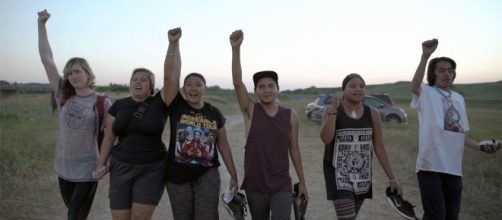In the 1960s, as the civil rights movement gained momentum, four African-American college students decided to take action. Inspired by the non-violent measures taken by Dr. Martin Luther King Jr., this action was not loud or forceful. They simply chose to sit and wait when they were not served in a local store. In Greensboro, North Carolina, in February 1960, a local ‘whites only’ store was their stage and their actions spoke louder than shouts, demands, or violence ever could. This peaceful Protest led to a campaign of sit-ins that caused many across America to abandon their policies of segregation.
The message of non-violence
Fast forward fifty-six years to standing rock Sioux Reservation. No doubt many have read, listened to, or seen the momentum building around the issue of the Dakota Access Pipeline. The $3.8 billion project hopes to set up a pipeline to transport crude oil. Issues surrounding the pipeline arose due to its route that is planned to cross Lake Oahe near the Standing Rock Sioux Reservation. Lake Oahe is a vital source of water for the Sioux reservation and there are major concerns of this water being contaminated by crude oil. In response, large numbers gathered in North Dakota and demonstrations were staged worldwide to support the cause against the pipeline. Throughout this campaign there was a strong message of non-violence, with central slogans proclaiming: “We are protectors not protestors," “we are peaceful and prayerful,” and “no weapons."
Every day at the camps across the Standing Rock Reservation, new volunteers would arrive and commence a training session.
This session would run for two hours every day at 2 p.m. Volunteers were instructed not to place their hands on the police or use weapons. These training sessions were seen as vital, especially as it takes more strength to remain calm and peaceful when campaigning as it does to protest in anger, and as Jackie, an indigenous woman from Wisconsin, commented “we’ve got to stay peaceful, or else we’re hypocrites," according to Mic.
Campaign vs. protest
Yet, what sets the actions of those during the Civil Rights Movement or at Standing Rock apart from a standard protest? While many campaigns revolve around political action, i.e. lobbying, petitions, or seeking reformist candidates to run an electoral campaign that you support, these movements are grassroots and last far longer than turning up for a one-day protest.
It is not just simply about marching with loud voices, angry hearts and determined minds; it is about sustainable, long-term change that goes beyond the direct action of protest. Supporters at Standing Rock and beyond were encouraged to contact their local bank if they supported DAPL and cancel their accounts, to campaign through social media, art, or to hold an event in their own town.
The issues surrounding the DAPL go beyond the protests at Standing Rock, as Sharon Lungo, the executive director of the Ruckus Society told Mic "This isn't the only pipeline, this isn't the only dirty energy project. Carrying that momentum into your community and applying it is just as important as having a physical presence out there." Swarthmore College analyzed 1,000 non-violent campaigns in 200 different countries to determine the differences between a campaign and a protest.
They found that protests are one-off events that express general resistance to an action or policy.
Campaigns differ in that they are carried out over time through a sequence of non-violent actions that only end when the objective is reached. While some campaigns may be reached in a few weeks, some can take years to win. However, it is clear that we can protest actions that we deem unjust, but only a strong, non-violent campaign, whose goal is to stand firm in its demands until the fight is won, will bring about real, lasting change.

